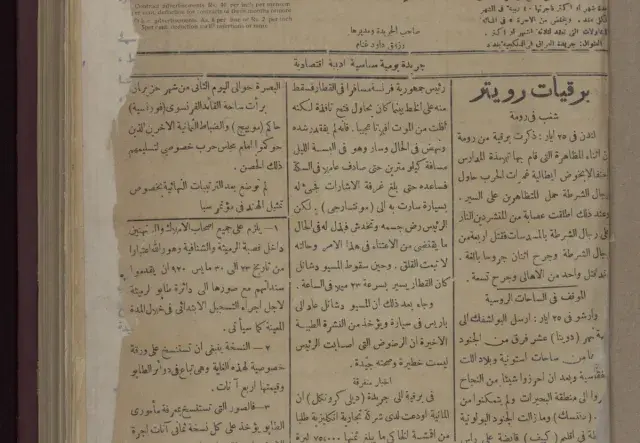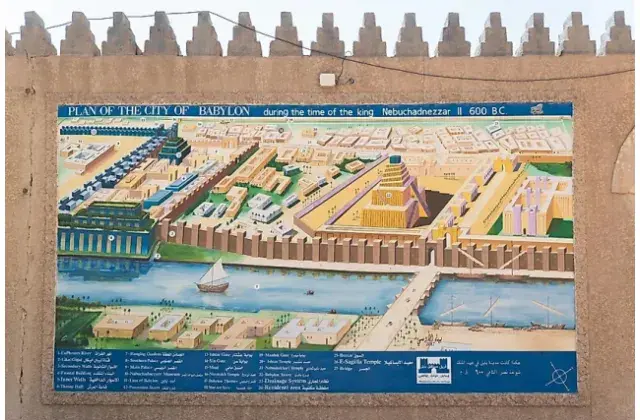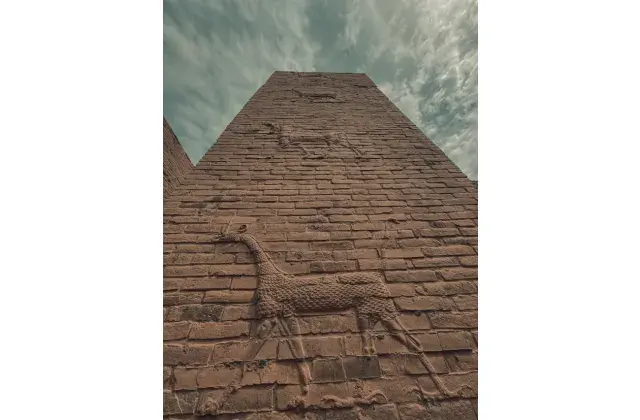The Birth of Press in Iraq

The Iraqi press undertook a multifaceted role, combating illiteracy, poverty, and advocating for the nation's liberation. It became a platform demanding political and social reforms, challenging oppression, feudalism, and despotic rulers, positioning itself as a nationalist institution rather than a commercial enterprise.
In Iraq, a diverse array of newspapers emerged, addressing issues spanning different historical periods. These publications played significant roles in Iraqi history, actively engaging with and reflecting the cultural, social, political, economic, and partisan dimensions of Iraqi society.
The Iraqi press evolved through various eras, marking its beginning during the Ottoman era. The first newspaper published in Baghdad was the HaDover (Dover Meisharim) newspaper that began appearing in 1863 without government license, and then resumed publication in 1870 with license until its cease in 1871. The newspaper was edited and published by Baruch son of Moshe Mizrachi; it was the only newspaper at that time and entirely written in Hebrew that covered news about the Baghdadi community, other world news and the teachings of the Torah. The newspaper was handwritten in Baghdadi script (Rashi script) and then later lithographed. The rare issues of HaDover is a significant collection that shed light on the Jewish community’s life in Baghdad at the time. Additionally, being the the first newspaper printed in Baghdad and Iraq, it challenges the perceived age of Iraq's press history, suggesting an earlier inception than commonly acknowledged.
The birth of the Iraqi press is widely attributed to June 15th 1869 with the publication of the first edition of Al-Zaura newspaper by Medhat Pasha, the governor of Baghdad. The newspaper was an effort by Medhat Pasha who brought a printing press from Paris; it was the official newspaper of Baghdad province. It was published on a bi-weekly basis in both Arabic and Turkish, and continued until it was seized in 1917 with the fall of the Ottoman Empire. Since 1969, June 15th has been celebrated as the National Day of Iraqi Press.
Following Al-Zaura, other newspapers such as Al-mousel in 1885 and fifteen years later in 1895, Al-basra were published in Arabic and Turkish. In April 22nd 1898, Mikdad Midhad Bedir Khan, a Kurdish prince, founded the inaugural Kurdish newspaper, Kurdistan, based in Cairo. Before this period, Kurdish language primarily served in poetry and spoken contexts, while education and written communication were predominantly carried out in Arabic, Persian, or Turkish. The publication heralded a new era to promote Kurdish language and to articulate the Kurdish aspiration for political and cultural freedom in all parts of Kurdistan while facing many challenges by the Ottoman authorities.
After restoring the liberal Ottoman Constitution and the Young Turk’s revolution of 1908, press regulation became less restricted. The first political newspaper Baghdad was published in 1908 by Murad Suleiman, which circulated three times a week in Arabic and Turkish. It was considered as a leading pan-Arab publication and was regarded as one of the most influential Iraqi newspapers of its era. This shift allowed intellectuals and writers in Iraq to create various publications, and Iraq saw a surge in newspaper and magazine publications, including notable ones like Sada Babel, Al-Raqeeb, Nineveh, Al-Najah, and Al-Nahda. Some of these publications were informative and some of them contributed to the awakening movements aimed at liberating Iraq from Ottoman occupation. Seda Babel, launched in 1909 in Baghdad, stood as one of Iraq's early newspapers, published weekly on Fridays. It was owned by Chaldean Christian figures, historian Ghanim Yusuf Rizq Allah as the Editor and teacher and poet Da’ud Sliwa as the publisher.
After the British troops entered Iraq in 1917, a new wave of newspapers began to emerge, reflecting the significant political transformations occurring during that era.
Among these publications was Al-Arab, published by the British authorities on July 4th, 1917. Acting as a mouthpiece for the British administration during a pivotal period of rising Iraqi and Arab nationalism, Al-Arab aimed to support the British military and political aims against the Ottomans. It depicted the Ottomans as occupiers and portrayed the British as liberators. The paper ceased publication in 1920 and was replaced by Al-Iraq. Meanwhile, the British political ruler in Sulaimani, Ely Banister Soane published Peshkawtin newspaper in 1922 in Sulaimani. The newspaper was issued in Kurdish mobilising the Kurdish public opinion towards the British political agenda in the region. On the other hand, other newspapers, like Al-Isitqlal owned by Abdul Ghafoor al-Badri, Degla by Dawood al-Saadi, and Badeaa by Dawood al-Ajeel, stood in opposition to the British policy in Iraq.
This article was written by Renas Babakir and is licensed under CC BY-NC 4.0.






